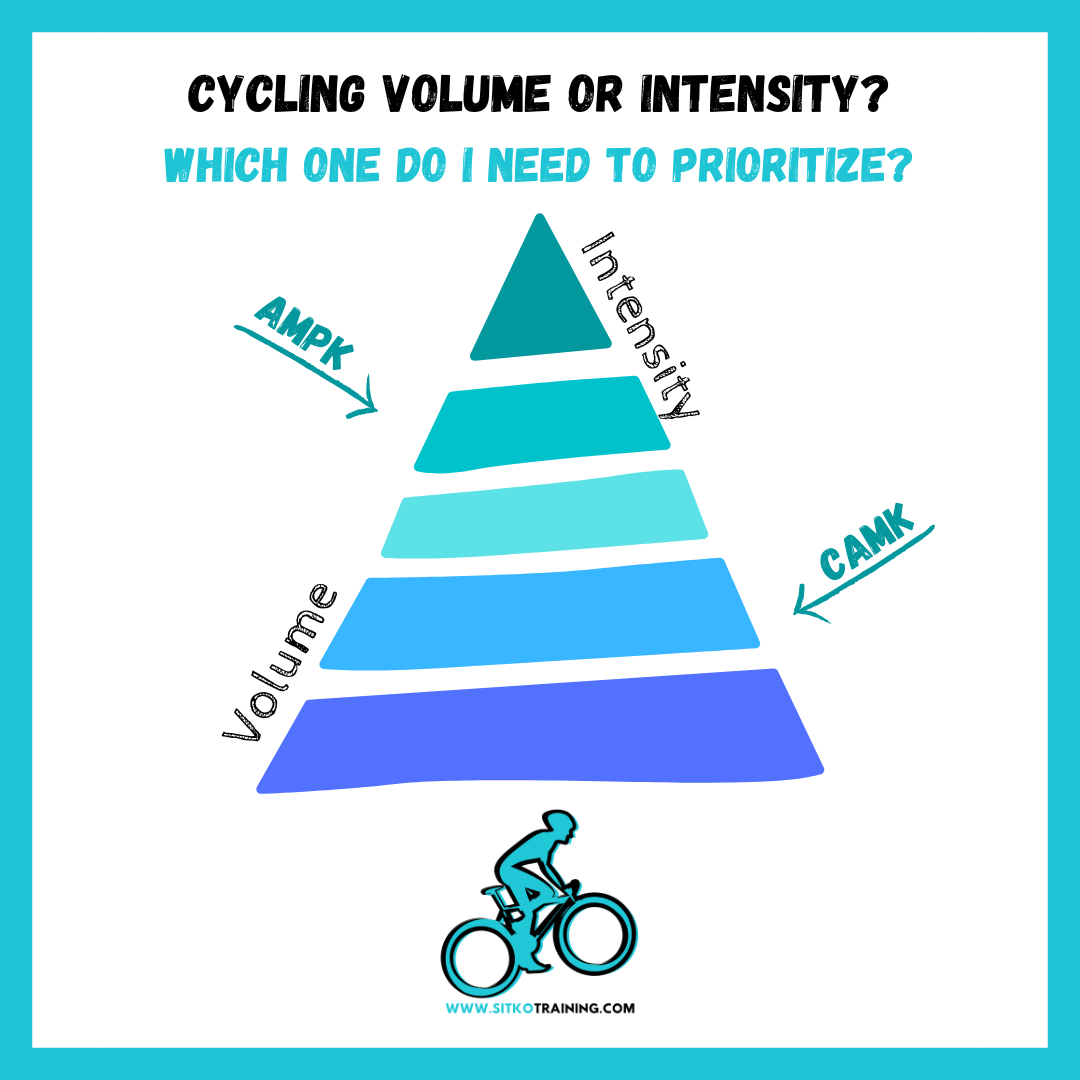
Training load, measured with the method that each professional likes the most, is based on a two-component model that integrates, on the one hand, a certain intensity and, on the other, a specific time at said intensity. The combination of both parameters will result in a certain value (either TRIMP, TSS, etc.) that will help us monitor the evolution of the athlete. The logical inference that we can draw from this data is that, indeed, we can achieve similar load parameters with very different work distributions (more intensity with less volume or vice versa). We will leave for another article the arduous question regarding whether 100 TSS obtained from Zone 2 work result in the same load as 100 TSS obtained from Zone 5 work and we will focus, in this case, on the best distribution between volume and intensity to achieve our purposes.
Signaling pathways of intensity and volume
This particular section is extremely relevant since it determines the rest of the topic of the article. We must know that high intensity training (interpreted as the one that produces high-energy muscle contractions) has a signaling pathway at the metabolic level that is very different from that of high-volume training (understood as repeated low-energy contractions). The former is signalized through AMPK (adenosine monophosphate kinase) while the latter acts on CaMK (calcium calmodulin kinase). Two different signaling pathways with beneficial and complementary effects on muscle development. From here we can extract the first conclusion of the article: an ideal training program will combine both components. Now, in what proportion? Is there one that is better than the other?
Do I prioritize volume or intensity?
As I have said in the previous paragraph, an optimal training program will combine both components. What should we take into account when choosing its optimal distribution? Three essential variables: our availability to train, recovery capacity and our performance goal.
Availability is the Trojan horse for most amateur athletes: very few reach their full reserve (maximum potential) throughout their sporting life, mainly because they have never trained enough. In cases where the time to train is limited, it is preferable to prioritize intensity since it produces a greater return on the time invested. In the case of a professional athlete and 25-30h per week to train, the volume becomes much more important: in programs of this type, loads that are based on more than 20/30% intensity work would be unaffordable. Let’s not forget that we are always talking about an endurance sport in which there are some adaptations that occur after hours and hours on the bike.
The ability to recover is another fundamental aspect to determine the work distribution: it is not the same to have 8 hours per week to train divided into two sessions than divided into four. Nor is it the same, as I mentioned previously, to try to incorporate a proportion of 40% of intensity work in 8 hours a week instead of 25.
Last (but not least), the ultimate goal of the training will dictate the distribution: preparing an Ironman bike section requires much more low-intensity, high-volume work than a criterium or cyclocross. Ideally, training should take us from the most general to the most specific requirement of our goal event: improving glycolysis or the phosphagen pathway in a brevet is of no use to me. Likewise, good oxidative phosphorylation during a criterium is of little use to me if the other two metabolic pathways are absent.
So how do I do it?
1º Determine the final goal you want to obtain: what is the event like? What performance factors dominate? A study of the competition is also not bad in this section: how much do they train? What characteristics do they have as athletes?
2º Verify that you have the necessary ingredients to obtain a great result: do I have enough weekly hours? How is the distribution of my schedules? Will I be able to manage fatigue well? Preparing for an Ironman with 8 hours of training a week does not seem very reasonable. Nor is it logical to get up at 5 in the morning to ride on the home trainer…
3º Use the ingredients in your favor. Develop the specific performance factors of your goal, play with the volume and intensity throughout the season to recreate the context of the test you will face. In case of a constrained schedule, prioritize intensity. As the time range opens, it is more important to prioritize volume.
Conclusion
Intensity is not better than volume. Volume is not better than intensity. Both are sine qua non factors to reach our ceiling as athletes. Without intensity, you will never reach your ceiling. Without volume, the ceiling you will reach will be very short. With Zone 2 work, VO2max is developed. With VO2max work, Z2 also develops (remember that the recruitment of fibers is progressive with the increase in intensity). Individualize, contextualize and play with both components seeking the greatest efficiency and effectiveness for your particular case. Here, as in so many other aspects of training, there are no magic recipes.
Sebastian Sitko
Professor at the Faculty of Health and Sports Sciences, University of Zaragoza. PhD in Sports Sciences, master’s degree in High Performance Sports by the French Olympic Committee, national cycling, triathlon and athletics coach and official coach for the American College of Sports Medicine.